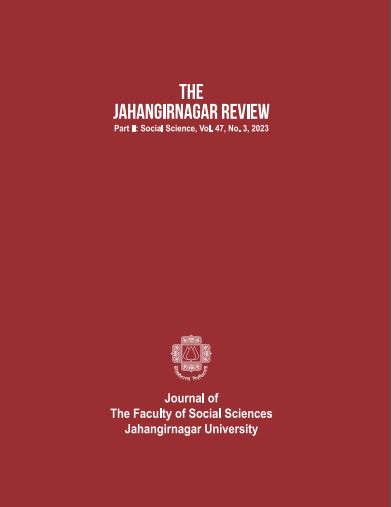Shaping Monga Perception: An Empirical Study on Northwest Bangladesh
Main Article Content
Abstract
This research aims to investigate the perception of Monga in the villages of the Ranpur Region, focusing on households that are highly vulnerable to Monga and the actors responsible for addressing it. Monga, a local term used in Bangladesh, refers to a seasonal hunger period that gained public attention in the late 1990s and was considered a "famine-like situation" in national policy agendas. Keeping this view in mind, this research provides an empirical analysis of how the perception of Monga is shaped by the affected people and the actors responsible for mitigating its impact. By employing various qualitative methods and document analysis, the paper aims to elucidate the diverse perspectives on Monga held by affected households and policy implementers. The research findings indicate that differences in perceptions regarding Monga pose challenges in formulating effective policies or strategies to mitigate Monga outbreaks. It is suggested that bridging the perception gap is crucial in developing acceptable and actionable policies or strategies. Furthermore, the economic aspects and demographic vulnerabilities (such as children, the elderly, and individuals with disabilities or chronic illnesses) need to be equally considered when shaping the perception of Monga in order to create and implement effective strategies in Northwest Bangladesh.

